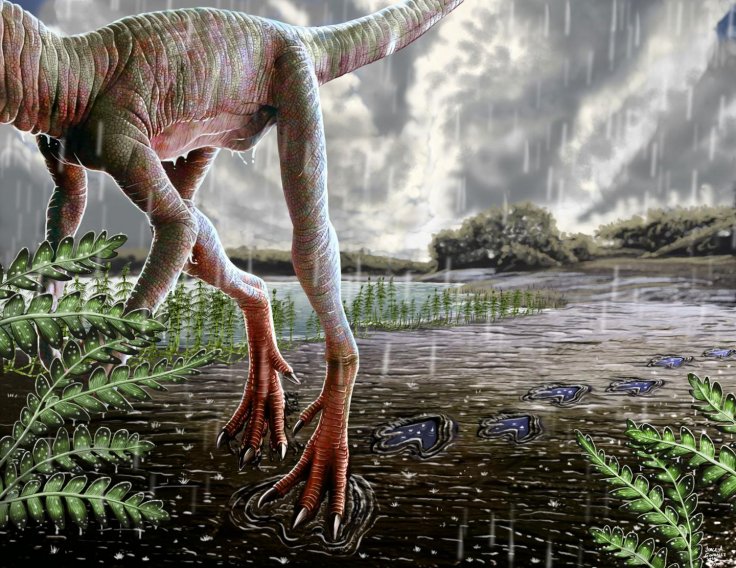The Triassic Period ranging from 252 to 201 million years ago, was a time of volatile change, particularly during an interval known as the Carnian (about 237 to 227 million years ago), which saw three dramatic events on Earth -- the first dinosaurs appeared, gigantic volcanic eruptions called the Wrangellia large igneous province spewed out greenhouse gasses and the climate suddenly shifted to warmer, more humid conditions that scientists call the Carnian Pluvial Episode (CPE).
Recent work suggests that the Wrangellia eruptions caused the CPE, which in turn resulted in climate change that may have spurred the early diversification of dinosaurs. But the lack of precise absolute dates for many Carnian sediments makes comparisons difficult. As few detailed paleoclimatic data exist for many regions outside of Europe, it is not clear whether the CPE was truly a global climate event or conclusively linking it to dinosaur diversification.

In a new study, published in the journal Gondwana Research, an international group led by Adriana Mancuso, a researcher at the Instituto Argentino de Nivología, Glaciología y Ciencias Ambientales in Mendoza, Argentina, demonstrated that the CPE affected the southern hemisphere, specifically South America, which strengthens the case that it was a global climate event.
"There are ample Triassic, and specifically Carnian, rocks and fossils in South America, and Argentina in particular, but until now there were no paleoclimatic studies that could conclusively show that the Carnian Pluvial Episode occurred in the southern hemisphere," Mancuso said.
The team, which included researchers at the University of Utah and the Berkeley Geochronology Center, studied Carnian rocks of the Los Rastros Formation, in the Ischigualasto-Villa Unión Basin in northwest Argentina and the team precisely dated volcanic ash preserved in lake sediments and pieced together the paleoclimate at this time.
"Our study focused on these rocks because they had the perfect combination of a good fossil record, dateable ash layers, and rich climate data preserved in lake sediments," said Randall Irmis of the University of Utah.
Crystal Formation
In order to date the ash layer, the scientists isolated small needle-like crystals of zircon, minerals that act like time-capsules. During an eruption, these crystals trap the element uranium in their crystal structure, but never incorporate lead.
Any lead preserved in the crystals today is a result of the radioactive decay of uranium. Since scientists know this decay rate, they can measure the ratio of uranium and lead in each zircon crystal and calculate how far back in time the crystals formed. In the present study, researchers measured it on a precise mass spectrometer at the Berkeley Geochronology Center. The scientists then obtained paleoclimatic data by looking at detailed features in the sediments for layers of carbon and oxygen isotopes.
After these measurements, the researchers estimated temperature, humidity and aridity and observed a distinct interval of particularly warm and humid conditions. Based on the absolute date from the same strata, they concluded that it matched in time with the CPE in the northern hemisphere. This warm and humid interval also fortuitously includes layers that preserve fossil footprints of early dinosaurs or their closest relatives.
"Our study suggests that the appearance of dinosaurs in South America could be linked to the CPE... To make a more robust global link between the CPE and dinosaur diversification will require many more detailed studies of paleoclimate with precise ages like we were able to do for the Los Rastros Formation in Argentina," said Mancuso.









